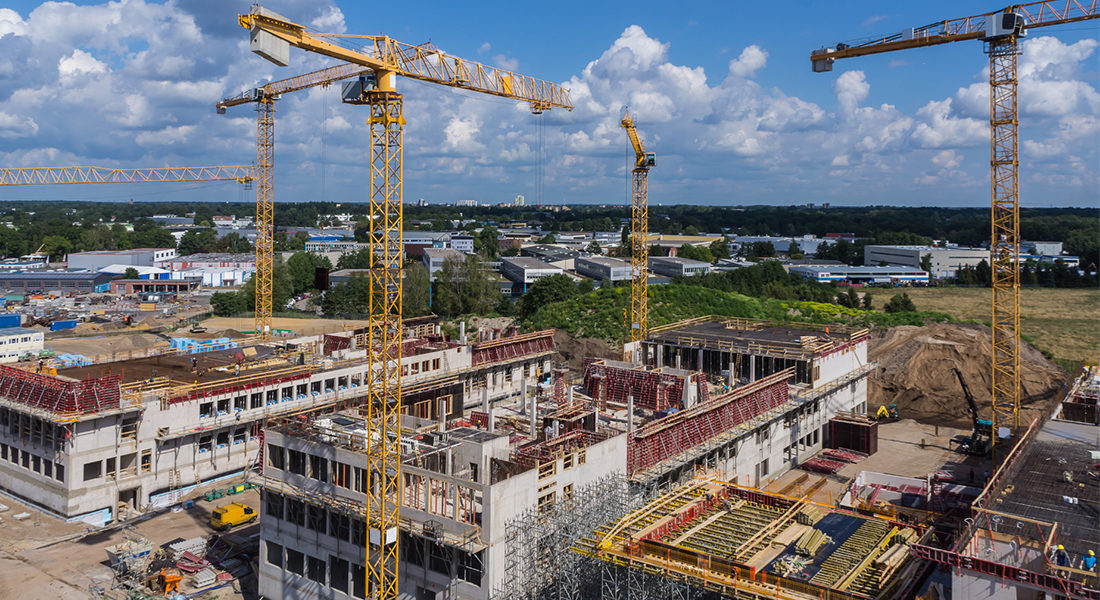Tenancy Pre-commitments for New Developments

What to look out for when securing or signing up to a tenancy pre-commitment for a new development
We have seen that despite COVID-19, the demand for manufacturing and warehouse facilities, distribution centres and retail space within homemaker centres continues to be strong. The development of new premises for these uses is increasingly important to meet the strong demand.
Whether it is industrial space, retail centres or commercial offices which are being developed, securing a ‘home’ upon completion of construction will be key to a tenant and securing the rental income stream from the tenancies will be paramount to a developer, investor or landlord. This is achieved by locking in the tenancy pre-commitments in a document called an Agreement for Lease (sometimes also known as an Agreement to Lease).
Why have an Agreement for Lease?
So why is an Agreement for Lease (or AFL) needed at all? Why can’t the parties enter into a lease which simply commences after the works achieve practical completion? Whilst this is not prohibited by any law, it is not recommended for the following reasons:
- If the developer is undertaking the development for an investor, the developer will not be a party for the duration of the lease term so they will want to exit the development soon after practical completion (and usually by the end of the defects liability period).
- The provisions dealing with the design and construction of the works are often bulky. If these were contained in the lease they would quickly become redundant once the lease term commences. This would make the lease unnecessarily bulky for the duration of the term and also problematic in a due diligence exercise undertaken by a future purchaser of the property or an assignee of the lease.
We have outlined below some of the common tips and traps for developers, landlords and tenants to look out for. Often a tenant will have greater negotiating power if they are the first cab off the rank for the development as their signing up to the AFL will enable the development to get off the ground. This does not mean tenants that follow after the first one do not have any bargaining power. Other factors will come into play, including the size of their tenancy and their ‘covenant strength’ such as reputation and financial standing.
If you are a developer or landlord
- Make sure rent is payable from lease commencement (subject to any rent incentives given). Check that the AFL does not allow the tenant any right to set-off the rent for any breach or costs payable by the developer (including if the incentive is not paid). Financiers will also look out for this when doing their due diligence to provide funding for the development.
- Make sure the tenant cannot terminate easily – a developer will usually have a right to terminate the AFL for the tenant’s breach but consider if this should be a reciprocal right. The risk profile is quite different for a developer. An acceptable right to terminate might be where the works are not completed by an agreed sunset date. A sunset date can provide some benefit to the developer if it also has a mutual right to walk away from the project after a long stop date. It also helps the developer to exclude the tenant’s ability to make a claim at law for unquantifiable damages, if the termination right is stated to be the tenant’s sole remedy.
- Keep to the works program by minimising the tenant’s ability to slow things down. This might mean minimising the tenant’s input into design development if it is consistent with the brief or concept design or limiting their input to certain trade packages.
- Prevent the risk of liquidated damages or lease tail costs by ensuring practical completion is achieved on time or is allowed to move for things beyond the developer’s reasonable control. Check that your extension of time regime allows for delays due to COVID-19 and natural disasters such as bushfire smoke, which have been prevalent issues for the construction industry in recent times.
- Consider the risks of allowing variation costs and fitout costs (if the developer is undertaking fitout works) to be disputed by the tenant and subject to a third party determination. The developer will have to bear any shortfall or gap between the third party determination and the costs actually incurred by the developer.
- Be aware that clawbacks of incentives might not be enforceable. The courts have been known to treat clawback provisions as a penalty and therefore unenforceable. This leaves developers to try to claim lost incentives as part of a claim for damages. Developers can structure the incentive in a number of ways to minimise this risk – such as a rent abatement where at least the benefit of the face rent is received for the period that the rent incentive is taken. Or as a fitout contribution where the landlord at least owns the fitout paid for by the incentive and obtains the depreciation benefit. Or try to use clever drafting for the incentive clawback (but its efficacy won’t be known until it is tested in court).
If you are a tenant
- Make sure the developer’s works are completed on time. This might mean having more milestone dates at the front end for satisfying conditions before the project can proceed and for substantial commencement of works, in addition to the usual anticipated date for practical completion at the back end.
- Make sure the final rent is within budget. Rent is usually calculated as a dollar rate per square metre multiplied by the surveyed area of the premises. This means the tenant is reliant on the developer building to the right size but if the developer builds too big, this will increase the rent potentially beyond what the tenant has budgeted for. There are ways of managing rental budget blowouts.
- Consider if any lease tail costs can be passed onto the developer. Lease tail costs are tricky and unlike liquidated damages (which usually cover storage costs, costs of mobilising and de-mobilising contractors), they are hard to quantify. The use of ‘look forward tests’ provides the parties with a forecast mechanism to assess in advance whether the developer has a reasonable likelihood of achieving practical completion on time. If the look forward test is not favourable to the developer, it allows the tenant to plan ahead and manage the risk of not having a ‘home’.
- Ensure there is impartiality when it comes to certifying practical completion. Independent certifiers can be jointly appointed to certify practical completion, although the tenant will need to consider if it will bear the shared costs of this.
- Structure incentives correctly. Tenants should consider if they need flexibility to use their incentives as a fitout contribution, rent-free, rent abatement, payment towards make good costs (at existing premises), relocation costs and costs of variations and fitout undertaken by the developer. There will be tax implications (and the incentive may be treated as taxable income) if the incentive is taken as a cash payment or even as a fitout contribution if it is not structured properly.
- Negotiate a rent-free fitout period if the tenant wishes to conduct its operations from the premises from lease commencement and not spend that time fitting out. Tenants will need to work out how long they will need to fitout the premises and either work backwards from the anticipated date for practical completion so that the premises will be handed over by that date for fitting out, or the fitout period commences after practical completion (with the lease only commencing at the end of the fitout period).
Often we find that the above and other issues that arise during an AFL negotiation are more of an uphill battle if these have not been commercially agreed in the heads of agreement or terms sheet. Where possible, it may be worthwhile addressing some of these early on and captured as part of the heads of agreement or terms sheet.
Dinh Ptok leads the Commercial Property & Development team at KHQ Lawyers and has extensive experience acting for major developers and landlords as well as tenants in their tenancy pre-commitments of industrial, retail and office space. If you have any questions or require assistance with your commercial property needs, please contact us.
The content of this article, which has been provided by KHQ Lawyers (and not the LFRA), is for reference purposes only, and does not constitute legal advice. Accordingly, it should not be relied upon as such. Legal advice about specific circumstances should always be obtained before taking any action based on this article.

Dinh Ptok, Principal Solicitor




